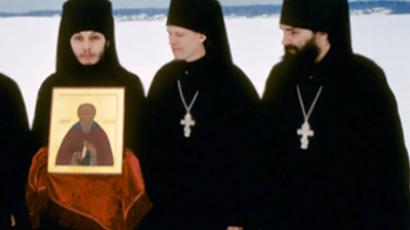Low-caste priest causes controversy in India
In India there is a class struggle which the law seems powerless to subdue. Rules have been changed to allow people of a low caste to take religious positions – but it makes little difference to traditionalists.
Nathulal Varma is a pandit, or Hindu priest. What sets him apart is that he is low-caste. Hindu priests are traditionally Brahmins, or upper-castes.
India has banned discrimination on the basis of caste, but in rural regions it is still widely practiced. What Pandit Varma has done is take the battle to the core of Hinduism itself.
Being a “Harijan” or low-caste, Varma was not allowed to even invoke the name of God. Yet 15 years ago, he decided to become a priest when he saw how his community was being mistreated.
“I used to attend weddings, and the upper-caste priests would rarely come to officiate, and behave condescendingly. I felt insulted and hurt. I decided that one of us lower-castes should learn the Vedic rituals and become a Hindu priest, to provide religious services to our community,” Pandit Varma says.
It took him over a year to master the rituals. Since he already knew Sanskrit – the language Hindu scriptures are written in – he had to train at an ashram, or monastery. Low-caste Hindus are usually not allowed to join ashrams. Pandit Varma was lucky; he found an ashram which did not discriminate.
He now conducts religious ceremonies for low-caste communities in the city of Kota. In fact, he is in so much demand that he is sometimes booked six months in advance.
“It gives us great pride to have him conduct the ceremony, as he has raised our community’s status. High castes used to dismiss us low-castes as small-minded people fit only for menial work. He has proven them wrong,” Narayan Teamoli, a Kota local resident says.
Most priests initially resent having a low-caste in their midst. When Pandit Varma first attended a congregation of priests, he got a strong reaction.
“The moment they heard I was a low-caste, none of the high-caste priests joined me on the dais. They said, ‘You are a Harijan, if they start becoming priests, then what will happen to us?’ Then my guru told them: This is just a profession, not anything related to caste. Only those who are pure in thought and deed can be priests. They can be of any caste,” Pandit Varma says.
“He does have the right to become a priest. Everyone has the right to become a doctor and an engineer, so the same with becoming a priest. This is not a caste-specific profession…It depends on the person’s knowledge and capability,” Hindu priest Satyanarayan Agnihotri believes.
For centuries the upper castes have been the custodians of religious rituals in Hinduism. Yet it is people like Pandit Varma who now represent a changing India – where your position in society depends on what you do, rather than in which caste you were born.














